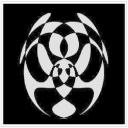Yahoo Answers is shutting down on May 4th, 2021 (Eastern Time) and beginning April 20th, 2021 (Eastern Time) the Yahoo Answers website will be in read-only mode. There will be no changes to other Yahoo properties or services, or your Yahoo account. You can find more information about the Yahoo Answers shutdown and how to download your data on this help page.
Trending News
6 Answers
- QuadrilleratorLv 51 decade agoFavorite Answer
Hi Dragan! Are we having drawing problems today? ;-)
Let O be the central point, let D be the topmost vertex,
and label the remaining vertices clockwise: E, F, G, H.
Let ∠HDO = B = ∠FOE and let ∠EDO = A = ∠HOG.
Then ∠X = ∠HDE = ∠GOG = A+B (so the ∠s about O sum to 360)
=> ΔHDE ≅ ΔFOG (by SAS) => HE = GF = c.
Hence ΔHOE is equilateral and ∠HOE = 60 = 2(A+B)
Thus, your ∠X = 30
- murrillLv 45 years ago
in case you draw a circle around the pentagon and the two the pentagon and circle share an identical center then you definately see why that's seventy two because of the fact the circle and the pentagon could be divided in 5 equivalent areas from the middle. for this reason the middle attitude for the two a type of is seventy two tiers (360/5=seventy two).
- Fazaldin ALv 71 decade ago
From your given DIAGRAM, the angle X is opposit to side c,
and is in between sides a and b.
Thus
cos(X) = (a^2 + b^2 - c^2) / 2ab
<X = arccos[(a^2 + b^2 - c^2) / 2ab]
............... A N S W E R ...................
- 1 decade ago
From the picture it is clear that all the angles at the center are different. Hence according to the given conditions --
Cos x = [ a² + b ² - c² ] / 2 ab
=> X = Arc Cos [ a² + b ² - c² ] / 2 ab ............... Answer
'''''''''''''''''''''''''''''''''''''''
- How do you think about the answers? You can sign in to vote the answer.
- Anonymous1 decade ago
a=b=c
X=60'
60+60+60=180'




